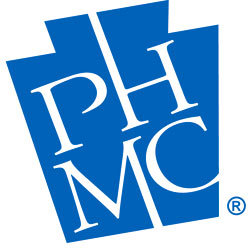There is great societal and cultural value in the preservation of our built heritage; of our historic communities and buildings. Most people understand the cultural value of preserving our history as it is illustrated by historic places. The need to experience our shared history seems to reflect a fundamental aspect of who we are as Pennsylvanians and Americans.
Importantly, heritage tourists, trail and recreational waterway users should not be defined solely as out-of-town visitors. Businesses count on visitation within their immediate trade area, and day-trail and waterway users are among the most common patrons of these resources. Providing outdoor recreation amenities and an authentic experience are as important to encouraging sustainable local business traffic as it is to attracting out-of-town visitation.
That’s because historic preservation and trail and river town development, as components of economic development strategies, are not limited to the value of tourism. Indeed, knowing and understanding the historic character of our communities will prove to be a necessity well into the future as we consider revitalization efforts, community development and transportation planning.
Studies demonstrate that due to shifting economies and demographics, many businesses and people are redefining where and why they choose to locate. These studies show that the existence of authentic historic character is often one of several factors considered when companies and individuals assess a community’s most valuable assets.
Perhaps counter-intuitively, studies suggest significant numbers of the Boomer and Millennial demographic groups share a vision of their ideal community. This vision is, in part, of a town that offers historic character, enriching outdoor recreation, access to technology and amenities within walking distance.
For much of the Millennial Generation, however, new economic realities have driven them to these decisions. The Millennials have never lived in an economy based on worker/employer loyalty, where a person engages in job or career choice that last a working lifetime. This generation knows that their lifetime employment will probably include many jobs and perhaps even several career paths. For some segments of the Millennial demographic the priority is to find a place to live, first, and to manage their career paths, second.
A significant portion of the Creative Class demographic is also attracted to community character, access to technology, transportation and outdoor recreation such as trailways. The Creative Class is made up not just of artists and artisans, but also includes professionals who work in design, engineering, information technology, consulting and research. Many of these folks are able to live anywhere they wish due to the technologies they utilize and their work patterns.
What all this means is that the historic character of our communities is a definable economic asset; that the historic character of a community has a real, intrinsic economic value. Communities that do not take that value into account when creating economic development strategies will not reflect economic reality nor appeal to significant segments of emerging demographics. This is especially true of communities located on trails and recreational waterways. Preserving, marketing and investing in historic properties enhances the unique, vibrant qualities of our towns, strengthening their appeal as destinations of choice for residents, entrepreneurs, investors and tourists. It is up to all of us engaged in historic preservation to help position our communities to make the best economic choices.
Comment Policy
PHMC welcomes and encourages topic-related comments on this blog. PHMC reserves the right to remove comments that in PHMC’s discretion do not follow participation guidelines.
Commenters and Comments shall be related to the blog post topic and respectful of others who use this site.
Commenters and Comments shall not: use language that is offensive, inflammatory or provocative (this includes, but is not limited to, using profanity, obscene, or vulgar comments); disparage other commenters or people; condone illegal activity; identify the location of known or suspected archeological sites; post personal information in comments such as addresses, phone numbers, e-mail addresses or other contact details, which may relate to you or other individuals; impersonate or falsely claim to represent a person or an organization; make any commercial endorsement or promotion of any product, service or publication.
If you would like to comment on other topics not related to this blog post but related to PHMC, please fill out the PHMC Contact Us Form.
